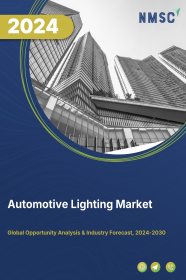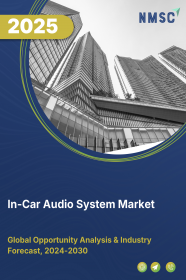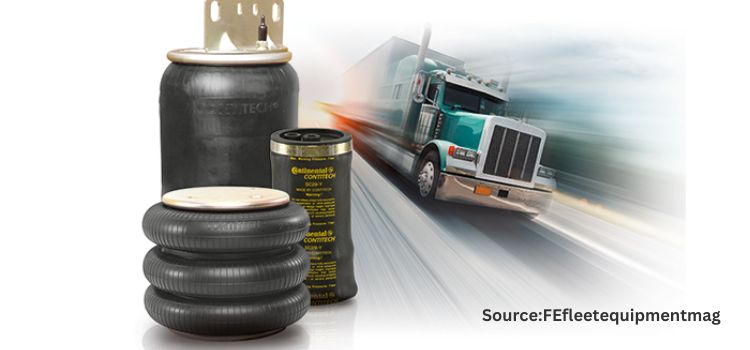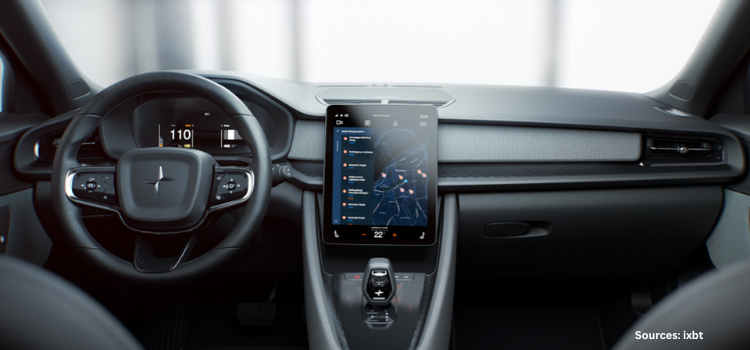
Automotive Lighting Market by Vehicle Type (Passenger Cars and Commercial Vehicles), by Application (Interior Lighting and Exterior Lighting), by Technology (Halogen, Xenon, LED, and Other Technologies), and by Sales Channel (Original Equipment Manufacturers and Aftermarket) – Global Opportunity Analysis and Industry Forecast 2024-2030
US Tariff Impact on Automotive Lighting Market
Trump Tariffs Are Reshaping Global Business
Automotive Lighting Market Overview
The Automotive Lighting Market size was valued at USD 36.16 billion in 2023 and is predicted to reach USD 59.78 billion by 2030 with a CAGR of 7.4% from 2024-2030. The automotive lighting market encompasses the global industry involved in the development, production, and sale of lighting systems for vehicles. This market includes various types of lighting such as headlights, taillights, and interior lighting systems, which are essential for vehicle safety and design. Key advancements in technology, such as LED, Xenon, and laser lighting, have driven innovation in the sector. The demand for energy-efficient, durable, and aesthetically appealing lighting solutions is growing, fueled by the increasing adoption of electric vehicles and autonomous driving technologies.
Market Dynamics and Trends
The global growth of the automotive lighting market is significantly influenced by the rising demand for electric vehicles (EVs). Electric vehicles utilize specialized lighting systems, including LEDs and OLEDs, due to their energy efficiency, durability, and design flexibility. As reported by the World Economic Forum in March 2023, the global sales of electric cars increased by around 60% in 2022, reaching over 10 million for the first time. As electric vehicle adoption continues to escalate worldwide, the demand for innovative lighting solutions is expected to propel the market's expansion on a global scale.
Also, the growth of the automotive lighting market is propelled by the increasing initiatives by regulatory bodies worldwide to mandate the use of advanced lighting systems in vehicles. These initiatives aim to enhance visibility and safety on the road, thereby fostering the adoption of innovative lighting technologies. For instance, in February 2022, the National Highway Traffic Safety Administration released the Federal Motor Vehicle Safety Standards related to lamps, reflective devices, and associated equipment. Such regulatory measures stimulate the demand for cutting-edge automotive electronics products on a global scale, driving the growth of the market.
Additionally, the worldwide rising road accidents is another factor driving the market as safety concerns become paramount for both consumers and regulatory bodies. Improved lighting systems, such as adaptive headlights and LED daytime running lights enhance visibility and reaction times for drivers, thereby reducing the risk of accidents. According to the World Health Organization (WHO), approximately 1.19 million people die each year as a result of road traffic crashes. This alarming statistic led to an increased focus on enhancing vehicle safety through superior lighting technologies, thereby fueling the market globally.
However, the high cost of LED lights limits widespread adoption among budget-conscious consumers and manufacturers, thereby restraining the market. The initial investment for LED technology is comparatively higher than the traditional lighting system, hindering the market's potential for broader integration of advanced lighting technologies in vehicles.
On the contrary, the increasing of automotive lighting market demand for personalized and customizable interior lighting experiences in vehicles, driven by desires for enhanced aesthetics, comfort, and functionality, is expected to create significant future opportunities. These opportunities are expected to further drive growth in the market as manufacturers innovate to meet consumer preferences for tailored lighting solutions.
Market Segmentations and Scope of the Study
The automotive lighting market report is segmented on the basis of vehicle type, application, technology, sales channel, and region. On the basis of vehicle type, the market is segmented into passenger cars and commercial vehicles. On the basis of application, the market is classified into interior lighting and exterior lighting. On the basis of technology, the market is divided into halogen, xenon, LED, and other technologies. On the basis of sales channels, the market is distributed into Original Equipment Manufacturers (OEMs) and aftermarket. The regional breakdown includes regions such as North America, Europe, Asia-Pacific, and the Rest of the World (RoW).
Geographical Analysis
Asia-Pacific holds the dominant in the automotive lighting market share and is expected to maintain this position throughout the forecast period. This is attributed to the growth of the automotive industry in countries, including India and China, that generates significant demand for automotive electronics products. According to data from the Government of India (GoI) in 2023, India is the world's largest manufacturer of tractors and two-wheelers and intends to double its auto industry size to USD 21600 by 2024. This robust growth rate reflects potential opportunities in the market within the Asia-Pacific region.
Moreover, the introduction of automotive night vision systems in Japan is playing a crucial role in driving the automotive lighting market growth in the Asia-Pacific region. These innovative systems are improving visibility in low-light conditions, thereby enhancing driver safety by providing a clear view of the road and detecting potential obstacles and pedestrians. By reducing the risk of collisions, these advanced technologies are making nighttime driving safer and enhancing overall road safety for both drivers and pedestrians.
For example, in October 2022, Kyocera, a Japanese multinational ceramics and electronics manufacturer, developed the world's first automotive night vision system. This groundbreaking technology integrates white and near-infrared light diodes into a single GaN laser device, aiming to enhance transportation safety and security through applications such as traffic monitoring infrastructure, nighttime security, and delivery systems.
On the other hand, the automotive lighting market in the North American region is steadily growing driven by the increasing vehicle manufacturing in Mexico. According to the report published by the International Trade Administration (ITA) in November 2023, Mexico is the world’s 7th largest manufacturer of passenger vehicles and 5th largest manufacturer of heavy-duty vehicles for cargo. The robust manufacturing sector in Mexico, underscores the need for high-quality, reliable, and innovative lighting systems, thereby propelling the growth of the market in the country.
Also, the introduction of OLED lighting products in the U.S. drives innovation in the automotive lighting market by offering flexible, energy-efficient, and visually appealing solutions for vehicles. This, in turn, fosters increased demand for automotive electronics. The OLED lighting products improves safety features of U.S. drivers, which heightens demand among automakers and consumers.
For instance, in December 2023, OLEDWorks, a global leader in the development and production of innovative organic light-emitting diode (OLED) technology, announced the launch of a new automotive lighting brand, Atala, at CES 2024. The brand is dedicated to the continuous commercialization of automotive-qualified OLED lighting products, which are described as the thinnest, brightest, and longest-lasting OLED lights on the road.
Competitive Landscape
Various key players operating in the automotive lighting industry include Robert Bosch GmbH, Faurecia, Johnson Electric, Denso Corporation, Schaeffler Group, Marelli Corporation, Stanley Electric Co., Ltd., AMS Osram AG, Valeo, and Hyundai Motor Group. These companies continue to adopt various market development strategies including product launches to maintain their dominance in the market.
For instance, in January 2024, AMS OSRAM AG launched SYNIOS P1515 automotive signaling, a series of side-looking, low-power LEDs. The company asserts that these LEDs can streamline design, offer ease of implementation, and facilitate the creation of a uniform appearance in extended light bars and other automotive rear lighting applications.
Additionally, in July 2023, Marelli launched h-Digi microLED, the next level of digital front-lighting aimed at a wider range of vehicles. This lighting solution is based on an intelligent multipixel LED, providing dynamic headlight operations in various vehicles. Also, in July 2023, Schaeffler Group launched NightViu LED driving lights engineered for construction and off-highway use. These lights help to improve operational safety by increasing nighttime visibility. The light is used in construction, mining, and in off-road equipment applications.
Key Benefits
-
The report provides quantitative analysis and estimations of the automotive lighting industry from 2024 to 2030, which assists in identifying the prevailing market opportunities.
-
The study comprises a deep-dive analysis of the current and future automotive lighting market trends to depict prevalent investment pockets in the industry.
-
Information related to key drivers, restraints, and opportunities and their impact on the automotive lighting industry is provided in the report.
-
Competitive analysis of the players, along with their market share is provided in the report.
-
SWOT analysis and Porter's Five Forces model is elaborated in the study.
-
Value chain analysis in the market study provides a clear picture of the roles of stakeholders.
Automotive Lighting Market Key Segments
By Vehicle Type
-
Passenger Cars
-
Commercial Vehicles
By Application
-
Interior Lighting
-
Exterior Lighting
By Technology
-
Halogen
-
Xenon
-
LED
-
Other Technologies
By Sales Channel
-
Original Equipment Manufacturers (OEMs)
-
Aftermarket
By Region
-
North America
-
The U.S.
-
Canada
-
Mexico
-
-
Europe
-
The UK
-
Germany
-
France
-
Italy
-
Spain
-
Denmark
-
Netherlands
-
Finland
-
Sweden
-
Norway
-
Russia
-
Rest of Europe
-
-
Asia-Pacific
-
China
-
Japan
-
India
-
South Korea
-
Australia
-
Indonesia
-
Singapore
-
Taiwan
-
Thailand
-
Rest of Asia-Pacific
-
-
RoW
-
Latin America
-
Middle East
-
Africa
-
REPORT SCOPE AND SEGMENTATION:
|
Parameters |
Details |
|
Market Size in 2023 |
USD 36.16 Billion |
|
Revenue Forecast in 2030 |
USD 59.78 Billion |
|
Growth Rate |
CAGR of 7.4% from 2024 to 2030 |
|
Analysis Period |
2023–2030 |
|
Base Year Considered |
2023 |
|
Forecast Period |
2024–2030 |
|
Market Size Estimation |
Billion (USD) |
|
Growth Factors |
|
|
Countries Covered |
28 |
|
Companies Profiled |
10 |
|
Market Share |
Available for 10 companies |
|
Customization Scope |
Free customization (equivalent up to 80 working hours of analysts) after purchase. Addition or alteration to country, regional, and segment scope. |
|
Pricing and Purchase Options |
Avail customized purchase options to meet your exact research needs. |
Key Players
-
Robert Bosch GmbH
-
Faurecia
-
Johnson Electric
-
Denso Corporation
-
Schaeffler Group
-
Marelli Corporation
-
Stanley Electric Co. Ltd.
-
AMS Osram AG
-
Valeo
-
Hyundai Motor Group

















 Speak to Our Analyst
Speak to Our Analyst





















